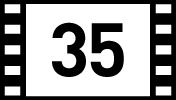

Lizabeth Scott stars as a rebellious 19-year-old named Paula who quits school and returns to her Nevada desert hometown and her jaded, gambling-house madam mother Fritzi (Mary Astor). Paula arrives back in town just as gangster Eddie Bendix (John Hodiak) also returns to town with his longtime companion Johnny Ryan (Wendell Corey). When Paula and Eddie become interested in each other, it creates more than a problematic love triangle. The dynamic in Desert Fury is more like a love-pentagram of crisscrossing dysfunction and co-dependency that also involves Paula's former boyfriend, a young cop played by Burt Lancaster (hot off his debut in the previous year's The Killers.)
The script by Robert Rossen (The Roaring Twenties, The Sea Wolf, The Strange Love of Martha Ivers) is based on a serialized story by Ramona Stewart published in Collier's magazine. Stewart delighted in racy plots with raunchy dialogue in which innocent females get tangled up in close male, possibly homosexual, relationships. The film doesn't shy away from this innuendo, making it one of the most blatantly gay-coded pictures of the 1940s. All this, and the three-strip Technicolor photography makes Desert Fury noteworthy and entertaining. Unfortunately, for all its pulpy goodness, the acting, writing and production values all verge on camp without rising to the level of high camp.
A pulpy, entertaining, blatantly gay-coded Technicolor western melodrama that plays like a love-pentagram of crisscrossing dysfunction and co-dependency.



